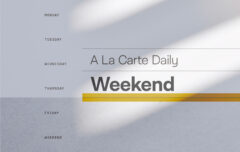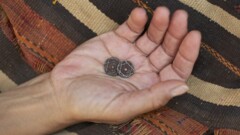Barb claimed to be a psychiatrist, but my guess is that she was not a very good one. One day she had asked our friends, her next door neighbors, to help clean up her house a little bit. She was having trouble with her finances and wanted to sell off a few valuable possessions. But first she needed to tidy up some. I volunteered to pitch in. Our friends regarded Barb as more of a charity case than a friend. They did not truly enjoy her company but they did want to help her the best they could. They wanted to be good neighbors and, as recent professed converts to Christianity, good Christians. Barb looked perfectly normal. She took good care of herself, wore nice clothes and didn’t at all stand out in a crowd. Apparently a successful career woman earlier in life, she now holed up in her house, only rarely leaving the property. With no car, no bus routes and few friends, she had little reason or ability to leave. No one knew where her money came from, but the fact that she had been divorced at least twice probably offered the best clue. Before we set out, my friends mentioned that Barb had a clear addiction to catalog shopping and that her spending habits had gotten out of control. I was not prepared for what that meant.
After my friend’s wife drove Barb to the store to catch up on some grocery shopping, I walked through her front door and had to pause for a few moments to take in the scene. The house was a two bedroom bungalow, a typical post-war family home. Built on Lakeshore Drive in Oakville, it was on one of the most desirous properties in Canada’s wealthiest city. Already many of the houses in this neighborhood had been purchased and flattened to make way for newer, bigger, more exclusive homes. The houses themselves were nearly valueless, the properties nearly priceless. Barb had held on to her property, perhaps waiting, as had many of the neighbors, for just the right offer. Our good friends lived next door to Barb, in a rented home that was also on a short list to be flattened. It was a nice enough house but we all knew it wouldn’t last long simply because it was too old, too small and on a property that was too desirable.
Barb’s house was a disaster. While the properties in that area were uniformly well-groomed and gave ample evidence that the owners took pride in ownership, Barb’s place was different–much different. The house was just barely visible from the road, surrounded by uncut trees and untrimmed bushes. A strange odor emanated from the place and on a warm day when the wind blew north to south, the neighbors would complain that it made their yards smell too. A rickety fence ran along one side of the property where it joined with a brand new section and a locked gate. Cut into the gate was a hole and a little weather-beaten note telling delivery services to simply push their packages through the hole. They were not welcome on the property. An old, old dog patrolled the property. Perhaps he was supposed to look angry and vicious and perhaps he once had been, but now he was too old and friendly and absent-minded to chase anyone away. The outside of the house showed signs of serious neglect. Windows were unwashed, walls were unpainted, gutters were rusty and cracked. When I walked through the front door I noticed that the door did not swing properly on the hinges and that it did not open or close all the way.
As my eyes adjusted to the gloom I paused in amazement. The house was packed, from floor to ceiling, from wall to wall, with stuff–stuff of all shapes and sizes. I could see only small glimpses of the floor, here and there. Even the portions of the carpet and hardwood that were visible were covered in the excrement of countless thousands of rodents. Immediately inside the front door was a wardrobe stuffed full of clothes. As I pushed beyond that into what must have been the living room I saw that it was filled with an assortment of things–an unassembled bedframe, still wrapped in its original cardboard and plastic; stacks upon stacks of shoe boxes, each of which held a pair of shoes or boots, apparently unworn; clothing boxes, many of which contained clothes–brand names–but all of which were unworn. There were statues and pieces furniture, books and sealed boxes. Two narrow paths led from the front door and through the piles into the house. One pushed straight ahead towards the bedrooms while the other veered to the left into what was once the dining room. Barb slept in the dining room, on an old, beat-up, mouse-chewed leather couch surrounded on all sides by great piles of her things. The path led to the couch where she had to climb over the arm in order to get to it. Not a single piece of floor in that room was visible.
We found our way to the bedrooms and noticed that one was so completely filled with stuff that we could not even walk through the door. Boxes and clothes and other trash stretched from the doorframe all the way to the window beyond. A new mattress and box spring was piled hopefully in a corner; an umbrella hung from the ceiling. The other bedroom held a giant bird cage, the kind suitable for a parrot, and while there was no sign of the bird, the floor was littered with birdseed and bird droppings. It stank. A closet in that room was stuffed full of hats and winter clothing, most of which looked unworn. Many of the clothes had been chewed on by mice and rats and were utterly destroyed. Though I did not step into the bathroom, I could clearly see a hole through the wall and could glimpse the yard beyond. We moved on to the kitchen and saw that Barb did not have a fridge and that she had obviously not used her stove in a very long time. A cooler on the counter contained rotting food that must have once been chicken. The only food in the house appeared to be diet food, primarily milkshakes, though we did also spot the remnants of fast food containers. Through the kitchen was a small landing where there were several bird cages filled with noisy, screaming birds. Bags of garbage spilled down the stairs and we had to walk outside and around to the back door to make our way into the basement. There was standing water on the floor down there and the whole basement, at least as far as I could see, was filled with clothes, empty bird cages, cardboard boxes and mannequins. It was damp, dank and disgusting. Barb had no working laundry facilities. She chose instead to wear her clothes until they were soiled, before stuffing them into garbage bags and replacing them with new ones.
My friend and I, having made our way around and having formed a plan of attack, began our work with gusto. With masks over our faces and a giant box of garbage bags, we began to separate the junk from the items that had even a little bit of value. We filled bag after bag and hauled them out to a trailer that would soon go to the dump. What was good and had some value–any value–we organized carefully, placing the items in boxes, bins or bags. We worked for several hours, toiling in the hot, dusty, dirty, vermin-infested house, the sweat pouring from us, leaving little trails through the dirt that covered our faces.
Then Barb came home and she was not happy.
(To Be Continued Tomorrow)









